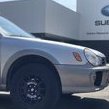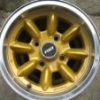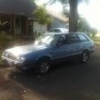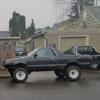Search the Community
Showing results for tags 'vacuum'.
-
I've searched through the forums looking for info on how to solve my issue but nothing I have found has helped. I'm hoping that you guys might be able to. So after an afternoon out on some rough trails, my soobs vent doors to switch from vent to defrost to bi-level have stopped switching, I only h...
-
After searching for almost a year, my fiance and I got this car in the spring of 2016 for her to use as a commuter during bad snow days. Shortly after purchasing it, we took it to a local mechanic to have it inspected and to address any glaring issues. We ended up putting in new wheel bearings, sus...
-
Just got my weber today and installed it. Well, kinda. I have the fuel in connected, and that's all. 1. Which out of these vales are my pcv, and can I plug the other? pic 2. What out of these tubes do I need? No egr or asv pic 3. What do I connect to this outlet and where do I get my electric ch...
-
Okay, everybody, so I'm having another problem with my '92 Loyale. It was running fine with the new battery and I got the shim for the loose terminal and that was the fix. But now it struggled to start a couple nights ago, and it's been really, really cold out in my area. It gave a good crank and tr...
-
About two weeks ago my WRX started stalling the engine when I would push in the clutch and shift to neutral as I came to a stop. It seems like as the engine comes up to temperature, it looses its ability to keep the engine at idle. Eventually I have to hold the throttle cracked open at idle to kee...
-
Just installed a Weber 32/36 DEGV this weekend. I wasn't sure what to do with the vacuum port on the EGR, so I left it alone. Drove 300 miles home just fine and super smooth. Got in touch with Weber and they said to remove the screw-type plug from the front left port on the Weber, so I did. Hooked a...
-
Backstory: We purchased a 1995 Impreza L. It was originally equipped with an EJ18, but has an EJ22. It has run like crap the entire time and recently emptied the oil, due to a 0.45 cal hole in the oil pan. We have removed the engine and cracked the case for the rebuild. I found that the engine came...
-
Like the title says, I have an automatic 1983 GL turbo wagon. I had it towed to my house due to a "massive" transmission leak. The tow truck couldn't fit up my driveway, so we (meaning my boyfriend and I) filled the transmission fluid and started it up. After a few seconds white smoke came billowing...
- 18 replies
-
- vacuum
- automatic transmission
-
(and 1 more)
Tagged with:
-
https://drive.google.com/file/d/0B44JjK5C_rtDRkNHRlhzcXNyNWs/view?usp=sharing https://drive.google.com/file/d/0B44JjK5C_rtDM0I0MVp5RmxYMG8/view?usp=sharing https://drive.google.com/file/d/0B44JjK5C_rtDMnZ0T1FwMllqQjA/view?usp=sharing Links above are Pictures. Just wondering what tubes I rea...
-
Hello all !!, My Car Is a 1985 GL 10 wagon 5 speed dual range 4wd with the HITACHI CARB After finding a 57000 mile ea 82 with good compression,I got it to replace my 262k with a broken block. I took it all apart, NO cracks between the valves!!. Took heads for resurface and valve job/seals, clea...
-
Overview: If your stock carbureted Subaru EA engine feels Gutless, slower than it used to be, and some times, it overreacts during acceleration and sounds louder while your subie runs like a bat out of hell, and the Hitachi Carburetor has a Vacuum Operated Secondary (high) Stage; I Bet that the...
-
- 8
-

-
- Carburetor
- Hitachi
- (and 8 more)
-
I have an ea81 I know for a fact the vacuum advance on my distributor is bad. The problem is I cannot find a suitable vacuum advance to replace my current one while i send it out for rebuild(have to get to work) So whats the DIFFERENCE BETWEEN ADVANCES FOR MANUAL AND AUTOMATIC? also is there a diffe...
- 5 replies
-
- distributor
- vacuum
-
(and 3 more)
Tagged with:
-
i just changed out my vacuum rail and all of my hoses connecting but now my GL turns over and then makes this weird backwards turn over sound and then spits either smoke or gasoline out of the carb
















